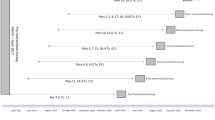Abstract
The rising concern about security and safety when traveling has been accompanied by an increased concern in the need for privacy. Expectations of privacy center around the right of the individual to determine what information is shared, the right of the individual to know what data is disclosed and collected and the legitimacy of the government to monitor and evaluate a citizen’s activities. This paper examines the legal privacy issues and the attitudes toward body scanning. Through the use of a survey, attitudes of air travelers were evaluated in terms of their responses to issues of body scanning acceptability, saving body scanned images, and protecting modesty of the traveler when scanning body images. Findings show that most of the U.S. population is accepting of full-body scanning when modesty measures are utilized. Though care should be taken when minority populations, both race and religion, are engaged in the full-body scanning process at an airport.
Similar content being viewed by others
References
Abeyratne R (2010) Full body scanners at airports–the balance between privacy and state responsibility. J Transp Secur 3(2):73–85
Alreck PL, Settle RB (1995) The survey research handbook: guidelines and strategies for conducting a survey, 2nd edn. McGraw Hill, New York
Andriessen H, van Gulijk, C, Ale B (2012) Human factors in layers of defense in airport security. 11th International Probabilistic Safety Assessment and Management Conference and the Annual European Safety and Reliability Conference, Helsinki, Finland, 25–29 June 2012
Electronic Privacy Information Center (2010a) Petition to NSA to stop use of whole body scanners. http://epic.org/privacy/airtravel/backscatter/petition_042110.pdf
Electronic Privacy Information Center (2010b) Petition to Transportation Security Administration seeking records on radiation and health impacts of scanners, http://epic.org/privacy/body_scanners/Body_Scan_Rad_Appeal.pdf
Frimpong A (2011) Introduction of full body image scanners at the airports: a delicate balance of protecting privacy and ensuring national security. J Transp Secur 4:221–229
Hofer F, Wetter OE (2012) Operational and human factors issues of new airport security technology-two case studies. J Transp Secur 5:277–291
Jacobson S, Lee A, Nikolev A (2009) Designing for flexibility in aviation security systems. J Transp Secur 2:1–8
Kane Robin, Kair Lee (2011) Testimony at “TSA Oversight Part 1: Whole Body Imaging” hearing of the National Security, Homeland Defense, and Foreign Operations subcommittee of the Committee on Oversight and Government Reform, U.S. House of Representatives; p. 2–4
Lee A, Nikolev A, Jacobson S (2008) Protecting air transportation: a survey of operations research applications to aviation security. J Transp Secur 1:160–184
Lord S, Nunes-Vaz R, Filinkov A, Crane G (2010) Airport front-of-house vulnerabilities and mitigation options. J Transp Secur 3:149–177
Mitchener-Nissen T, Bowers K, Chetty K (2012) Public attitudes to airport security: the case of whole body scanners. Secur J 25:229–243
Redfern v. Napolitano (2013), 727 F. 3d 77
Rosen Jeffrey (2010) “The TSA is invasive, annoying-and unconstitutional ” Washington Post, Nov. 28, p. 6 of printout)
Rotenberg Marc (2010) “An Assessment of Checkpoint Security: Are Our Airports Keeping Passengers Safe?” Testimony on airport security before the House Committee on Homeland Security. http://homeland.house.gov/Hearings/index.asp?ID=242
Stewart MG, Mueller J (2014) Cost-benefit analysis of airport security: are airports too safe? J Air Transp Manag 35:19–28
Straub DW (1989) Validating instruments in MIS research. MIS Q 13(2):147–166
Udall Sen Tom (2011) Letter to colleagues on FAA Air Transportation Modernization and Safety Improvement Act. http://tomudall.senate.gov/?p=press_release&id=762
van Boekhold J, Faghri A, Li M (2014) Evaluating the security screening checkpoints for domestic flights using a general microscopic simulation model. J Transp Secur 7:45–67
Veisten V, Flugel S, Bjornskau T (2011) Public’s trade-off between a new risk-based airport screening and asserted terror risk impact: a stated choice survey from Norway. J Transp Tech 1:11–20
Acknowledgments
This research was partially founded by the Ken & Amy Kiser Family Endowment for Faculty Support in the College of Business at James Madison University, Harrisonburg, VA.
Author information
Authors and Affiliations
Corresponding author
Rights and permissions
About this article
Cite this article
Dillon, T.W., Thomas, D.S. Airport body scanning: will the American public finally accept?. J Transp Secur 8, 1–16 (2015). https://doi.org/10.1007/s12198-014-0151-5
Received:
Accepted:
Published:
Issue Date:
DOI: https://doi.org/10.1007/s12198-014-0151-5



